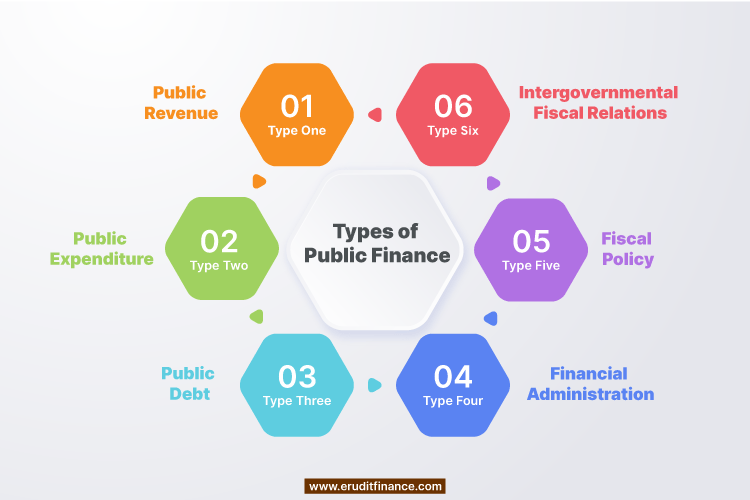Introduction to Public Finance Meaning
Governments rely heavily on Public Finance, which includes managing the money allocated for infrastructure and public services. Public Finance Meaning dynamic field investigates spending, budgeting, and taxing to maximize the welfare of society. We’ll break down the complexity of public finance in this blog, highlighting its vital role in influencing the state of the economy and enhancing the quality of life for citizens. Come along for a tour through the complex financial dynamics underlying public well-being.
What do you mean by Public Finance?
It is a field of study within economics that examines the financial operations of governments at different levels, including how they raise money, distribute it, and handle debt. It consists of how governments pay for infrastructure, public services, and other necessities of the community. This topic examines public spending, taxation strategies, and the complex relationship between fiscal policy and social welfare.
Understanding how governments make economic decisions that affect the lives of their populations depends on studying it. Levying fees on individuals and corporations to finance public goods and services is known as taxation, and it is a crucial element. Allocating these funds effectively to suit a variety of demands, from public infrastructure and defense to education and healthcare, is what budgeting, another crucial component, requires.
Additionally, it assesses the effects of government debt management and borrowing, both of which are essential components of preserving fiscal stability. Public finance analyses the complex dynamics of taxation and spending to shed light on a country’s economic situation and the efficiency of its legislative initiatives in advancing the general welfare.
To put it simply, public finance is the foundation of any country’s economy, impacting both the general socioeconomic environment and the standard of living of its people. Gaining an understanding of this topic is crucial to understanding the financial forces that propel societal growth and the difficulties of governance.
Who invented Public Finance?
There is no single inventor for public finance, which is a discipline of knowledge and a business sector. Economists of different schools together with policy makers and scholars have contributed to its development. Public finance finds its roots in early thought on the economy, whose foundations are laid down by such theorists as Adam Smith, who addressed questions related to the financing of public goods, taxation principles, and others in “The Wealth of Nations”
However, David Ricardo and John Stuart Mill also introduced other ideas concerning public finance, taxes, and expenditure by the government. From the beginning of the nineteenth century through to the latter half of the twentieth century the work of economists such as Alfred Marshall, Rivard Musgrate, and others contributed greatly to formalizing public finance as an area of specialization
Essentially, public finance is the fruit of research done by various scholars over time who have contributed ideas and theories on government expenditure for public good and growth.
What are the Types of Public Finance?
Public Finance is an extensive term which includes numerous factors regarding revenues of the government, expenses of government and administration of debt by government”. The key types of public finance include.

Public Revenue
- Tax Revenue: Taxes are collected based on incomes, sales, services, and assets.
- Non-Tax Revenue: Revenue earned from sources other than tax like fees, fines, and income from Government undertakings.
Public Expenditure
- Current Expenditure: This comprises of daily operational expenditures such as salary, maintenance, and other administration costs.
- Capital Expenditure: Long-term asset purchase and infrastructure development.
Public Debt
- Internal Debt: The country may borrow internally by the sale of various types of bonds such as the U.S Treasury bills and notes.
- External Debt: Incurring debts from external sources or global bodies.
Financial Administration
- Budgeting: Budgeting for different government programs and activities.
- Financial Planning: Sustainable long-term fiscal planning.
Fiscal Policy
- Tax Policy: The designing and use of fiscal policies in generating money and adjusting economic behavior.
- Expenditure Policy: Determining government allocations towards objectives of economic development.
Intergovernmental Fiscal Relations
- Revenue Sharing: Intergovernmental tax sharing.
- Grant Systems: Intergovernmental transfers between high and low levels of government for specified reasons.
Policymakers, economics, and citizens alike need to understand such issues because they provide information about ways through which the government spends its money to satisfy social demands and sustain macroeconomic stability.
Bottomline
Hopefully, You understand the meaning of Public Finance. We tried to cover almost all the points. Comment Down your queries below.
Suggested Articles:-
What are the sources of External Finance
List of designations in a Company











Thanks in support of sharing such a pleasant opinion, post is fastidious, thats why
i have read it entirely